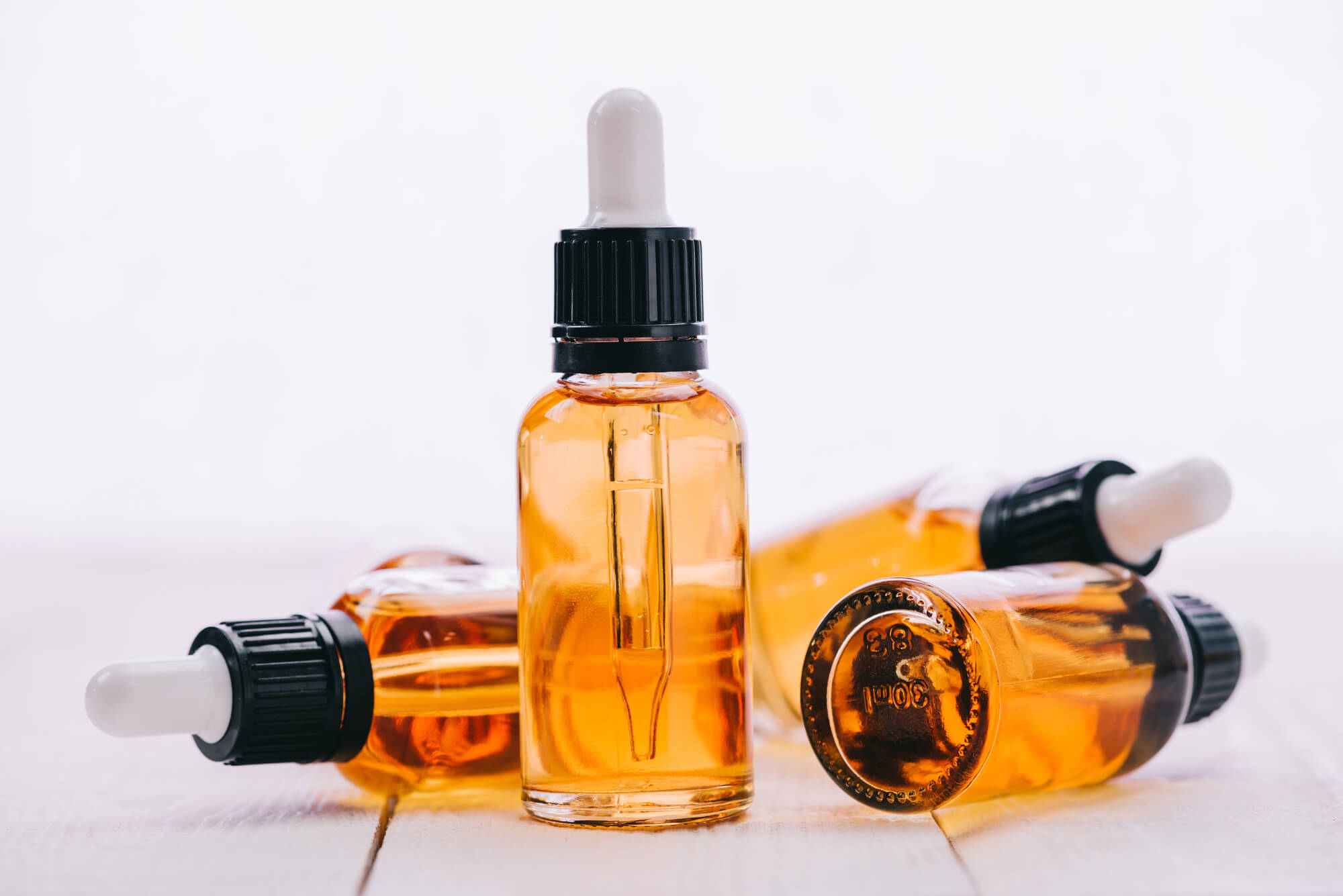CBD Oil for Plantar Fasciitis: A Natural Approach to Relieve Foot Pain
Are you struggling with the excruciating pain of plantar fasciitis? If you're seeking a natural alternative to traditional treatments, CBD oil might be worth exploring. This article delves into the potential benefits of using CBD oil for plantar fasciitis and offers insights on how to incorporate it into your foot care routine.
Understanding Plantar Fasciitis
Plantar fasciitis is a common foot condition characterized by inflammation of the plantar fascia, a thick band of tissue that connects the heel bone to the toes. The condition often leads to intense heel pain, especially during the first steps in the morning or after prolonged periods of inactivity. High-impact activities, obesity, and improper footwear are known risk factors for developing plantar fasciitis.
The Science Behind CBD Oil
CBD oil is derived from the hemp plant and contains cannabinoids and terpenes that interact with our body's endocannabinoid system. This system plays a crucial role in regulating pain and inflammation. CBD, or cannabidiol, is a non-psychoactive compound found in CBD oil that has gained attention for its potential therapeutic effects.
Potential Benefits of CBD Oil for Plantar Fasciitis
Alleviating Pain Associated with Plantar Fasciitis
Plantar fasciitis often manifests as intense heel pain, especially during the first steps in the morning or after periods of rest. CBD oil has the potential to provide relief from this debilitating pain.
By interacting with the endocannabinoid system (ECS) and influencing pain perception, CBD may help reduce the intensity and frequency of pain experienced by individuals with plantar fasciitis. Activation of CB1 receptors by CBD inhibits the transmission of pain signals, resulting in pain relief.
Moreover, CBD may affect the release of neurotransmitters involved in pain modulation, such as serotonin and anandamide. By modulating these neurotransmitters, CBD can further enhance pain relief, providing individuals with much-needed comfort.
Reducing Inflammation in the Plantar Fascia
Inflammation of the plantar fascia is a key characteristic of plantar fasciitis, contributing to pain and discomfort. CBD oil's potential anti-inflammatory properties make it a promising option for reducing inflammation in the plantar fascia.
CBD interacts with CB2 receptors found in peripheral tissues and immune cells. By activating these receptors, CBD may suppress the release of pro-inflammatory molecules and dampen the inflammatory response. This, in turn, can alleviate the inflammation in the plantar fascia, reducing pain and promoting healing.
Furthermore, CBD has been found to inhibit the production of cytokines, which are signaling proteins involved in initiating and regulating inflammation. CBD oil can help mitigate the inflammatory processes that contribute to plantar fasciitis symptoms by reducing cytokine production.
Managing Chronic Pain and Inflammation
CBD oil offers a potential alternative to traditional pain management strategies for individuals dealing with chronic plantar fasciitis pain. Chronic pain often disrupts daily activities and negatively impacts the quality of life, making effective pain management crucial.
CBD's interaction with the ECS has shown promise in managing chronic pain. CBD oil may provide long-term relief for individuals with chronic plantar fasciitis by modulating pain perception and reducing inflammation.
Complementary Approach to Conventional Treatments
CBD oil should not be viewed as a standalone treatment for plantar fasciitis but rather as a complementary approach alongside conventional therapies. It can be integrated into a comprehensive treatment plan that addresses the underlying causes of plantar fasciitis while targeting pain and inflammation.
Combining CBD oil with other therapeutic interventions, such as stretching exercises, physical therapy, and proper footwear, can optimize results. CBD oil may enhance the overall effectiveness of these treatments by reducing pain, inflammation, and discomfort.

Choosing the Right CBD Oil for Plantar Fasciitis
Understanding CBD Product Quality and Third-Party Testing
When selecting a CBD oil product for plantar fasciitis, it's crucial to prioritize quality and transparency. Look for CBD brands prioritizing quality control measures and providing third-party testing results.
Reputable brands ensure their CBD oil is derived from organically grown hemp, free from pesticides and other harmful contaminants. Third-party testing verifies the potency and purity of the product, confirming that it contains the advertised amount of CBD and is free from impurities.
Determining the CBD Dosage and Potency
Determining the right CBD dosage and potency for plantar fasciitis requires individualized consideration. Factors such as body weight, severity of symptoms, and personal sensitivity to CBD can influence the optimal dosage.
It is advisable to start with a low dosage and gradually increase until the desired effects are achieved. CBD oil products typically provide information on the concentration of CBD per serving, allowing you to calculate and adjust the dosage accordingly.
Consulting with a healthcare professional, such as a podiatrist or physician, can provide valuable guidance in determining the appropriate dosage for your needs.
Consideration of CBD Product Types
CBD oil is available in various forms, offering unique benefits for relief from plantar fasciitis. Consider the following types of CBD products:
- CBD Tinctures: These are liquid extracts typically taken orally by placing a few drops under the tongue. Tinctures offer quick absorption into the bloodstream, providing fast-acting relief.
- CBD Topicals: These are CBD-infused creams, balms, or lotions that can be applied directly to the affected area. Topicals provide localized relief, targeting pain and inflammation in the plantar fascia.
- CBD Capsules or Edibles: These are CBD-infused capsules or edible products, such as gummies or chocolates, that are ingested orally. Capsules and edibles offer a convenient and discreet way to consume CBD, but they may take longer to take effect.
Consider your preferences, lifestyle, and desired method of administration when choosing the most suitable CBD product for your plantar fasciitis relief.
CBD Full-Spectrum, Broad-Spectrum, or CBD Isolate
CBD oil products can be classified as full-spectrum, broad-spectrum, or CBD isolate. Understanding these classifications can help you make an informed decision:
- Full-Spectrum CBD: This type of CBD oil contains all the naturally occurring compounds in the hemp plant, including cannabinoids, terpenes, and trace amounts of THC (tetrahydrocannabinol). The presence of THC, although in low concentrations (less than 0.3%), may contribute to the entourage effect, where the combined compounds work synergistically to enhance the therapeutic benefits.
- Broad-Spectrum CBD: Broad-spectrum CBD oil contains all the beneficial compounds found in full-spectrum CBD but with the THC removed. It offers the potential benefits of multiple cannabinoids and terpenes without the psychoactive effects of THC.
- CBD Isolate: CBD isolate is the purest form of CBD, containing only cannabidiol without any other compounds. It is THC-free and may be suitable for those who prefer to avoid any potential interaction with THC or other cannabinoids.
Consider your preferences and any sensitivities or restrictions when choosing between full-spectrum, broad-spectrum, or CBD isolate products.
Checking for Proper Labeling and Transparency
Reliable CBD brands prioritize clear and accurate labeling to help consumers make informed choices. When selecting a CBD oil product, ensure that the label provides clear information about the CBD content, serving size, and any additional ingredients or additives.

How to Use CBD Oil for Plantar Fasciitis
Determining the Right Dosage
Finding the optimal CBD dosage for plantar fasciitis requires a personalized approach. Factors such as body weight, severity of symptoms, and individual sensitivity to CBD can influence the dosage needed for effective relief.
It is generally recommended to start with a low dosage and gradually increase until the desired effects are achieved. A common starting point is 10-20 mg of CBD per day. It's important to note that individual responses may vary, and it's always best to consult a healthcare professional to determine the appropriate dosage for your situation.
Sublingual Administration
One popular method of using CBD oil is through sublingual administration. This involves placing a few drops of CBD oil under the tongue and holding it there for 60-90 seconds before swallowing. This allows for faster absorption into the bloodstream through the sublingual glands.
Sublingual administration is convenient and provides a relatively quick onset of effects, usually within 15-30 minutes. Many CBD oils come with a dropper, making measuring and controlling the dosage easy. Follow the product's instructions for the recommended dosage and administration method.
Topical Application
CBD topicals, such as creams, balms, or lotions, offer a targeted approach for localized relief in the affected area of the plantar fascia. To apply CBD topicals, massage a small amount onto the heel and other areas experiencing pain or inflammation.
Topical application allows the CBD to interact directly with the cannabinoid receptors in the skin without entering the bloodstream. This method may be particularly beneficial for targeting pain and inflammation in the plantar fascia. Follow the product instructions for the recommended frequency of application, typically 2-3 times a day or as needed.
Oral Consumption
CBD oil can also be consumed orally as capsules and edibles or added to food or beverages. Oral consumption provides a convenient and discreet way to incorporate CBD into your daily routine. However, it may take longer for the effects to be felt as the CBD needs to pass through the digestive system and be metabolized by the liver.
When consuming CBD orally, it's important to consider bioavailability—the amount of CBD that reaches the bloodstream. Oral consumption generally has lower bioavailability compared to sublingual or topical administration. Factors such as metabolism and food in the stomach can affect absorption rates.
Follow the product's recommended dosage guidelines for oral consumption, and be patient, as it may take up to an hour or more to feel the effects. It's advisable to start with a low dosage and gradually increase as needed.
Incorporating CBD Oil into a Comprehensive Foot Care Routine
To optimize the benefits of CBD oil for plantar fasciitis, consider incorporating it into a comprehensive foot care routine. This can include:
- Stretching exercises: Perform gentle stretching exercises for the calves, Achilles tendon, and plantar fascia to improve flexibility and reduce tension in the foot.
- Supportive footwear: Wear well-fitted shoes with proper arch support and cushioning to alleviate pressure on the plantar fascia and promote proper foot alignment.
- Healthy lifestyle habits: Maintain a healthy weight, stay active, and avoid activities aggravating plantar fasciitis symptoms.
CBD oil can complement these foot care strategies by relieving pain, reducing inflammation, and promoting comfort. Remember to consult with a healthcare professional to ensure CBD oil suits you, especially if you have any underlying health conditions or are taking other medications.
Safety and Side Effects
While CBD oil is generally considered safe, it's important to be aware of potential side effects and drug interactions. CBD can interact with certain medications, so it's crucial to consult with a healthcare professional before adding CBD oil to your regimen, particularly if you're currently taking other medications. Choosing reputable CBD oil brands and following recommended dosage guidelines will help ensure safe usage.
Conclusion
CBD oil offers a natural approach to managing the pain and inflammation associated with plantar fasciitis. By targeting the endocannabinoid system, CBD may provide relief and support your overall foot care routine. However, it's important to remember that CBD oil is not a cure-all and should be used as part of a comprehensive treatment plan. Consult with a healthcare professional to determine if CBD oil is a suitable option for your plantar fasciitis symptoms.
Incorporating CBD oil into your foot care routine can help reduce pain and inflammation, offering a potential alternative to traditional treatments. Remember to choose high-quality products, follow recommended dosage guidelines, and consult with a healthcare professional for personalized advice. With proper usage and guidance, CBD oil may become a valuable tool in your journey toward

